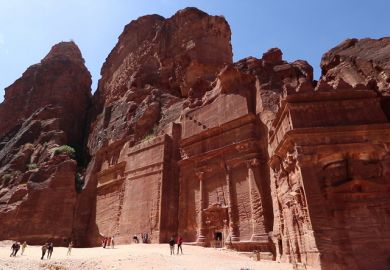For most non-Chinese, the name of Tiananmen Square probably evokes the massacre of the students in 1989. For the Chinese people and those who have lived in China, Tiananmen has complex and multiple resonances. Until 1911, under the Qing dynasty, the space the square occupies, just outside the Forbidden City itself, was the site of government offices. The 1989 student occupation of the square was in a long tradition of popular demonstrations in the historic space. The most famous, a student protest against the treatment of China under the Treaty of Versailles in 1919, inspired the hugely influential May Fourth movement.
Another, in 1935, marked the beginning of popular resistance to Japanese occupation.
In 1949, when Mao Zedong chose the reviewing stand in Tiananmen - the Gate of Heavenly Peace - to proclaim the establishment of the People's Republic to the assembled masses, he was consciously invoking both the imperial tradition of the Forbidden City complex as the locus of power in the Chinese world and Tiananmen's revolutionary history.
In the 1950s, a greatly enlarged square became a "theatre" in which elaborately choreographed scenes of mass support for the revolution could be acted out on May Day and National Day.
Later, during the Cultural Revolution, Mao reviewed the mass ranks of Red Guards in the square.
The tradition of spontaneous unofficial protest was revived after the death of Zhou Enlai, the premier, in January 1976 and again in April, at the Festival of the Dead, when huge crowds defied the proscription on mourning for him.
Wu Hung, now a professor of art history at the University of Chicago, was brought up in Beijing and was once employed as a conservator in the Forbidden City. He writes of himself: "A mainland Chinese of my generation (that is, the generation schooled in the 1950s and early 1960s) often has difficulty seeing the People's Republic of China as part of a larger historical process or pattern, and is often shocked to find links or parallels between New China and Old China." Yet Wu has done a splendid job of tracing both the links and the discontinuities in his lavishly illustrated history of the remodelling of Beijing as a modern capital.
As a kid, along with every other schoolchild in China, Wu learnt to sing "I love Beijing's Tiananmen". When he participated in the parades, he craned his neck to see Mao. But by the time of the Cultural Revolution, he was not only disillusioned, he was in trouble as a class enemy.
While the Red Guards marched and "made revolution", he was detained along with other "ox-demons and snake-spirits" guarded by a Workers' Mao Zedong Thought Propaganda Team. The makeshift detention quarter in the Central Academy of Fine Arts where he was held had been a barracks for the imperial guard in the 19th century. Many of his fellow prisoners were well-known artists who had been responsible for such triumphs of Maoist culture as the bas reliefs on the Monument to the People's Heroes in Tiananmen Square.
Now on regular visits back to China, Wu follows the development of Beijing's avant-garde art scene. His concluding chapters are taken up with a discussion of the way alternative artists - painters, photographers, sculptors and installationists - have appropriated the iconography of Maoist China, using the Tiananmen gate, the square and Mao's face to reject and critique the past and articulate their feelings about the broken myths.
This highly original book shows how the transformation of Beijing was dominated first by a resolve to infuse the city's public spaces with new political meaning, and more recently by the desire for a capital that reflects China's status as a world power. These official projects have been contested on their own territory by the counterculture that has developed since the death of Mao. The author's account of his own developing political understanding adds another perspective to his cultural studies approach and records the intellectual and political history of a generation.
Delia Davin is emeritus professor of Chinese social studies, Leeds University. She lived in Beijing for three years in the 1960s and 1970s.
Remaking Beijing: Tiananmen Square and the Creation of a Political Space
Author - Wu Hung
Publisher - Reaktion
Pages - 2
Price - £19.95
ISBN - 1 86189 235 7
Register to continue
Why register?
- Registration is free and only takes a moment
- Once registered, you can read 3 articles a month
- Sign up for our newsletter
Subscribe
Or subscribe for unlimited access to:
- Unlimited access to news, views, insights & reviews
- Digital editions
- Digital access to THE’s university and college rankings analysis
Already registered or a current subscriber? Login



